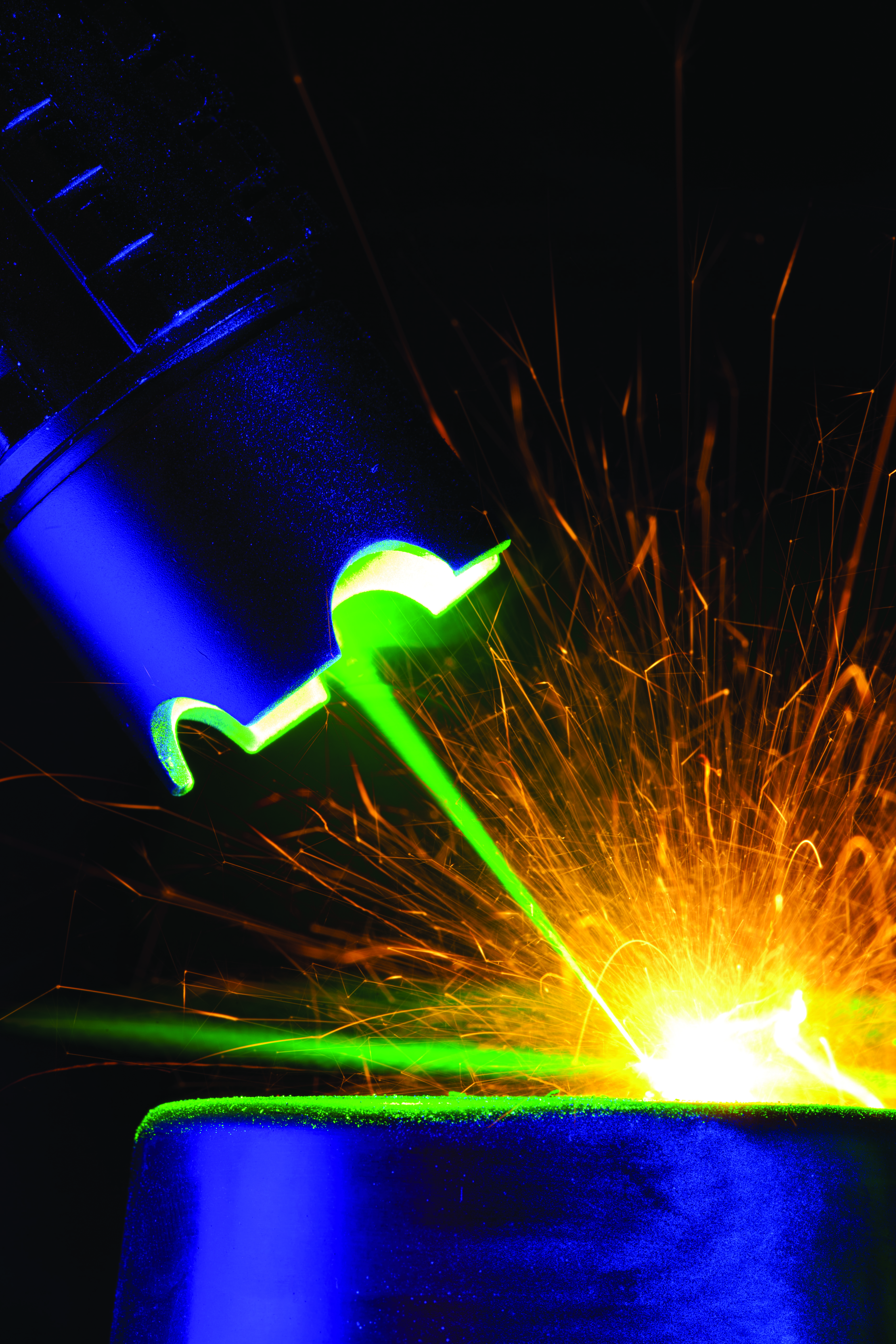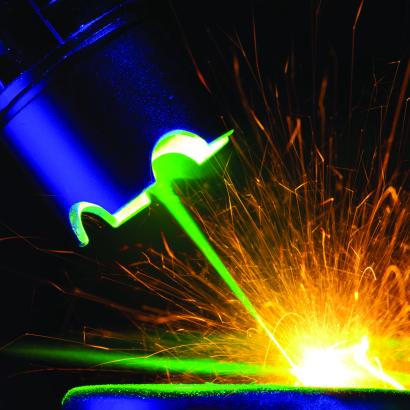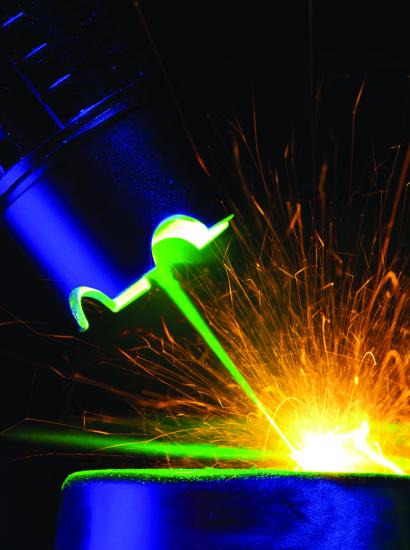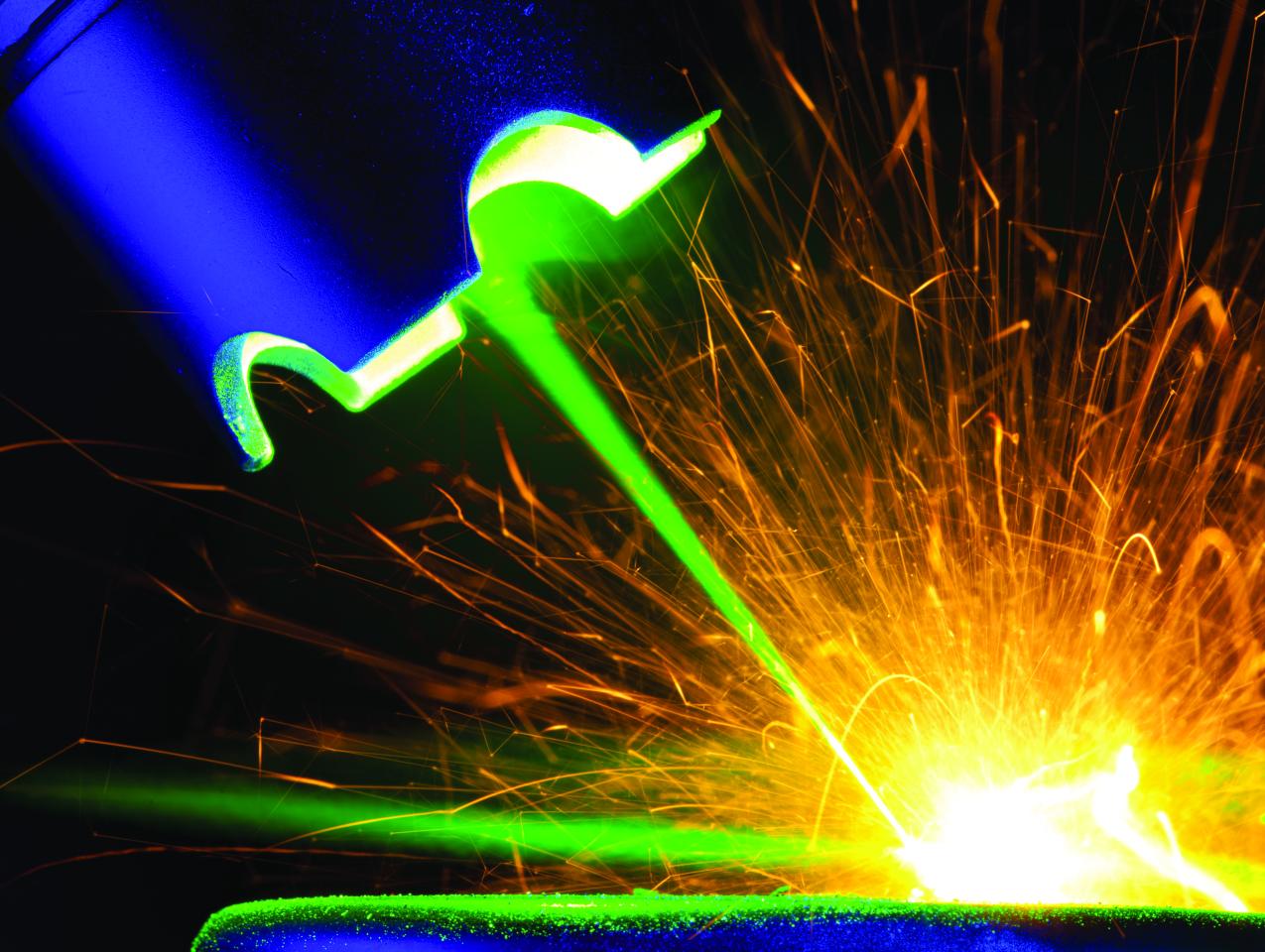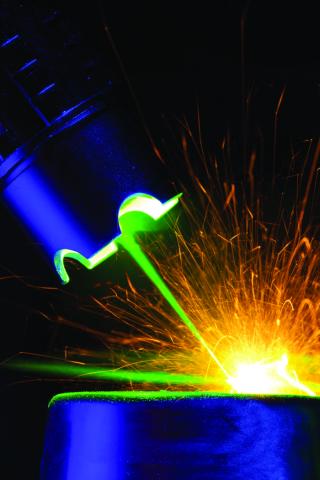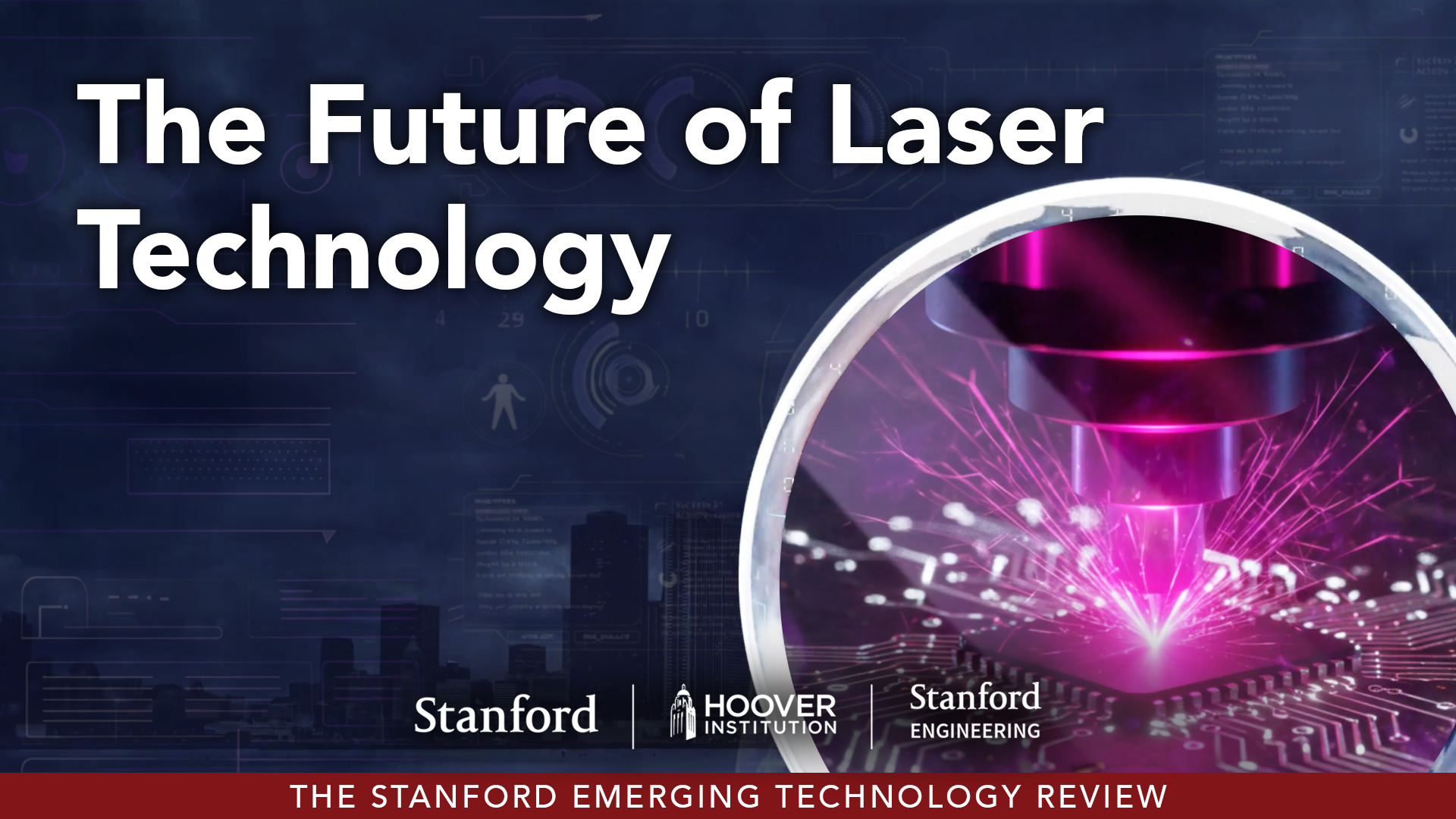- Science & Technology
- Innovation
- Understanding the Effects of Technology on Economics and Governance
This excerpt from the latest issue of the Stanford Emerging Technology Review (SETR) focuses on lasers, one of ten key technologies studied in this continuing educational initiative. SETR, a project of the Hoover Institution and the Stanford School of Engineering, harnesses the expertise of Stanford University’s leading science and engineering faculty to create an easy-to-use reference tool for policy makers. Download the full report here and subscribe here for news and updates.
Improvements in laser technology since its invention in 1960 have enabled light to be manipulated and used in previously unimaginable ways. It is now applied so broadly that it can be considered an enabling technology—one whose existence and characteristics enable other applications that would not be feasible and/or affordable without it. New lasers are being developed by researchers and companies across a wider range of light wavelengths, which will make the devices even more useful.
A laser—an acronym derived from “light amplification by stimulated emission of radiation”—is a light source with three important characteristics. First, its light is monochromatic (i.e., single color), meaning the light is highly concentrated around a central wavelength, with very little emitted at other wavelengths. Monochromatic light enhances data transmissions by minimizing chromatic aberration, which occurs when a lens can’t focus different colors of light on a single point. Monochromatic lasers are also essential in scientific and medical applications that need specific wavelengths for controlled interactions with materials or tissues.
Second, a laser is directional, which means its energy can be concentrated into a small spot, significantly increasing intensity and making lasers useful for applications that require precision and high energy density, such as cutting, welding, and surgical procedures.
Third, laser light is coherent, which means that the light waves it uses are in phase with each other—that is, they repeatedly reach the same peak or trough at the same point in time and space. This property is important for holography, interferometry (the measurement of light sources), and optical sensing, where precise phase information is needed to create accurate and detailed images or measurements.
Myriad uses
The basic operating principles and physics of lasers are generally well understood. What stands out in reviewing key developments in laser technology is the wide variety of applications to which the technology is relevant. Here are some examples of important applications.
Medicine: Lasers in medicine have historically been used to ablate, cut out, or vaporize tissue or to clot bodily fluids. For example, a robot-guided laser has been used to perform bone surgery. Traditional tools like saws, drills, and burs can cause mechanical and thermal damage to bone and tissue and are also limited to simple cuts. In contrast, lasers offer more precise, cleaner cuts with less damage to surrounding tissue, and they can handle complex trajectories, especially when guided by a computer-controlled robot arm for fully automated surgery. This technology not only enhances accuracy but also reduces recovery time for patients.
Lasers can also be used to destroy subsurface tumors with minimal thermal damage to surrounding healthy tissue. And lasers may come to play an important role in certain cancer treatments.
Military applications: Lasers as weapons could serve a variety of ground-based missions, including attacking satellites and providing short-range air defense to counter drones, rockets, artillery, and mortar rounds. In these roles, lasers have several advantages over conventional munitions—in particular, lower cost per shot and potentially more rounds in their magazines (assuming their power supplies are not exhausted). But they have certain disadvantages as well. Most important, rain, fog, and some other atmospheric conditions potentially limit their range and beam quality.
Progress in laser weapons involves making them smaller and lighter, more rugged for an operational military environment, more powerful, and more efficient in their conversion of energy in the magazine to shots fired. Auxiliary technologies such as those for beam tracking and target sensing must also work in concert with the lasers themselves.
Communications: Lasers play a key role in communications by transmitting data through fiber-optic cables, which make up the bulk of the infrastructure behind the internet. As demand for information transfer grows, approaches that raise data transfer rates are increasingly important. Recent results have shown that data can be sent through fiber-optic cables using much shorter laser pulses without a loss of transfer fidelity, potentially lowering power requirements significantly.
Lasers can transmit data over long ranges and are even being used to enable satellites in orbit to communicate with one another. Lasers are well suited for space-to-space communications, where there is very little to interfere with the beam. Starlink—the space-based internet service provider wholly owned and operated by SpaceX—uses laser communications to transfer data at high speeds directly between satellites in low Earth orbit (LEO) without going through ground stations.
Additive manufacturing: Lasers are useful for additive manufacturing (also known as 3D printing), enabling precise and efficient creation of complex structures through various techniques.
Particle traps and quantum computing: Lasers can be used to create the coldest temperatures achieved on Earth—significantly colder than the void of interstellar space. Laser-cooled atoms demonstrate measurable quantum behavior and hence are one of the approaches being pursued to work with quantum bits, or qubits, in labs. (Qubits are the building blocks for quantum computers.)
Orbital debris removal: NASA is supporting a project to research a network of lasers mounted on space platforms. These lasers are supposed to deflect debris of various sizes through ablation, which involves an intense laser pulse vaporizing surface material on an object. The material is ejected away from it, altering the object’s momentum. If the impulse of that ejection is properly oriented, the object’s speed can be reduced, and eventually it will deorbit and burn up in the atmosphere on re-entry.
Imaging: At short wavelengths, pulses from an X-ray free-electron laser (XFEL) can penetrate through materials to image structures and measure a material’s physical properties. XFELs can emit very short pulses, which helps them excel at tracking changes over very short time periods. Previous results have allowed new proteins to be imaged and have enabled researchers to observe phase transitions of quantum materials in real time or observe materials under extreme conditions of pressure, such as those in the center of the sun.
Materials processing: Lasers are now used for a wide range of applications in materials processing, including laser cutting of precise shapes, laser drilling of micron-scale holes, and laser peening—deliberately deforming surfaces—to add stress to materials. Ultrashort pulse lasers enable material to be ablated precisely with minimal damage to surrounding areas—a process useful in both manufacturing and surgery.
Nuclear fusion: Fusion occurs when two light atomic nuclei (usually deuterium and tritium, both isotopes of hydrogen) collide to form a heavier nucleus, releasing a large amount of energy in doing so. As an energy source, fusion energy is still in the research and development stage. The central issue in research on fusion for producing energy is the confinement problem: how to confine the fuel for long enough to ensure “ignition” of the fusion reaction. One approach to solving this problem is magnetic confinement fusion, which uses powerful magnets to contain and control a superheated plasma of deuterium and tritium. A second is inertial confinement fusion, which calls for rapidly compressing a deuterium-tritium fuel pellet using lasers to ignite the fusion reaction. For inertial fusion energy to become commercially viable, high-energy, high-repetition-rate laser beams are needed to drive the samples to the extreme states required.
Future views
Laser technology has become essential for a wide range of applications, including communications, high-end chip production, defense, manufacturing, and medicine. Improving key laser figures of merit—peak power, energy, average power, pulse length, and wavelength—is a primary focus of extensive laser research.
Because advances in laser technology tend to occur in the context of specific applications, laser technology research and development is widely dispersed among different types of laboratories and facilities. The challenges of innovation and implementation are addressed in a highly distributed fashion—that is, across a multitude of laboratories and facilities. The reason is that progress in laser technology seems to be highly dependent on the specific application that requires a laser.
Given that lasers are an enabling technology for many applications, public policy issues tend not to arise for lasers per se. Rather, they arise in the sectoral, societal, or policy context of a particular application.
>> Speaker 1: When the first working laser was created in 1960, it was described as a solution looking for a problem. This technology, which can produce targeted waves of light with extremely high energy in only a few nanoseconds, has become essential. For a wide range of applications. Including communications, medicine, high-end chip production, defense, and manufacturing.
Lasers are considered to be an enabling technology, creating uses in applications that would otherwise be unaffordable or unfeasible. Take healthcare, traditional medical tools like saws and drills can easily damage bone tissue and are limited to simple cuts. Lasers, however, offer more precise, cleaner cuts with less damage to surrounding tissue.
LASIK eye surgery, for example, provides ultra-short laser pulses to remove small amounts of corneal tissue, reshape the cornea, and improve how light is focused onto the retina. Robot-guided lasers can now perform bone. Surgery with greater precision than traditional tools, enabling complex cutting trajectories reducing recovery time. Cancer treatments are now using laser-delivered proton beams to destroy tumors with minimal collateral damage.
In military applications, lasers provide major benefits over conventional systems. Their low cost per shot, greater magazine capacity, and greater effectiveness at providing defense. Against short-range missiles, drones, and satellites make them an ideal solution when efficient. And rapid responses are needed. Communication has been completely transformed by laser technology.
Fiber optic cables, the backbone of the Internet, rely on lasers to transmit Data. Companies like SpaceX use laser high-speed communication between satellites, allowing more data to be shared faster than previously possible in ground communication. Manufacturing also benefits from laser precision in drilling and 3D printing. Researchers are also experimenting with lasers that.
Range from 10 megajoules pulses for fusion. Research to 10 petawatts for laboratory astrophysics, more than the output of 10 million nuclear power plants. Since lasers aren't enabling technology, most public policy issues are specific to their applications. Such as medical procedures or directed energy. Weapons, rather than the lasers themselves.
Should technology serve dual-use civilian and military purposes? Are such technologies environmentally safe? As advancements continue, questions like these will be imperative to the future of laser technology.







